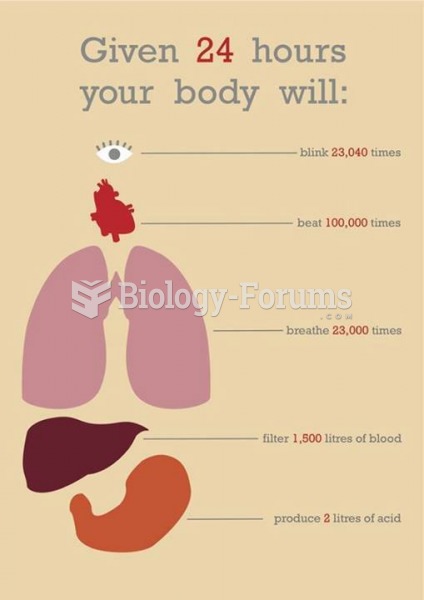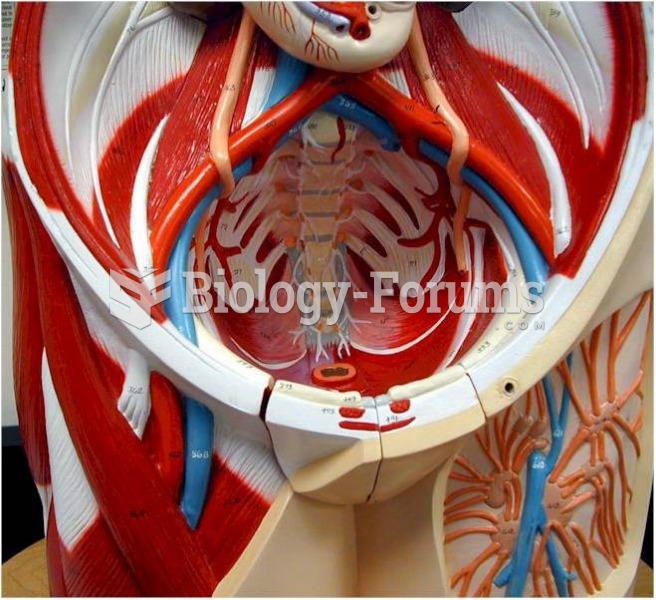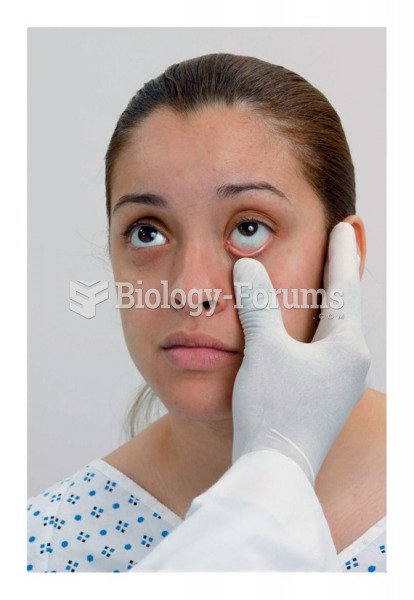|
|
|
Did you know?
The human body produces and destroys 15 million blood cells every second.
Did you know?
Urine turns bright yellow if larger than normal amounts of certain substances are consumed; one of these substances is asparagus.
Did you know?
Asthma cases in Americans are about 75% higher today than they were in 1980.
Did you know?
When blood is deoxygenated and flowing back to the heart through the veins, it is dark reddish-blue in color. Blood in the arteries that is oxygenated and flowing out to the body is bright red. Whereas arterial blood comes out in spurts, venous blood flows.
Did you know?
The familiar sounds of your heart are made by the heart's valves as they open and close.







